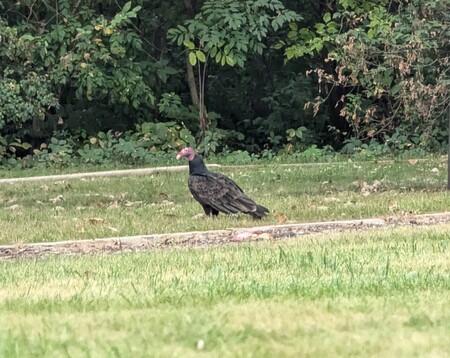
Good Natured: Nature’s Dinner Guests in Kane County
When I was a kid, eating out was pretty big deal. A meal at McDonald's meant either a) we were on vacation and didn't have time to pack a proper lunch or b) Grandpa Atterberry was in town. The man loved his Filet-O-Fish!
My parents did go out once in a while, maybe three or four times a year, and their list of favorite destinations reads like a Who's Who of dead restaurants: Tally-Ho in West Chicago; Pheasant Run in St. Charles; Mill Race Inn in Geneva; and The Milk Pail and Chateau Louise in Dundee.
I bring this up today not because I'm hungry (though what I wouldn't give for a doggie bag with leftover Milk Pail prime rib right about now) but because lately I've been thinking about…
TV dinners.
Whenever Mom and Dad would go out, without my brother and I, TV dinners were the consolation prize. It was a special privilege to go to the grocery store and pick out frozen meals just for us kids. Oh, the choices… Fried Chicken! Roast Turkey! The mysteriously alluring Salisbury Steak! Each one arrayed on a compartmented foil tray, with a foil top you'd leave on except for the little area over the dessert.
These memories came flooding back to me the other night as I clicked through an assortment of photos I'd taken that afternoon. I'd had the good fortune to witness a couple of turkey vultures—or TVs--up close and personal as they pecked away at an ill-fated squirrel—their dinner--that was splayed out on Seventh Ave. in St. Charles.
You can bet I had a good laugh as I realized that those vultures were savoring their road rodent TV dinner every bit as much as I once relished my Swanson TV Brand Roast Beef and Gravy.
I also felt lucky to have seen these odd birds at all. Turkey vultures are notoriously wary, and spook at the slightest hint of something amiss.
That afternoon I'd been driving from one appointment to another when I'd spotted two TVs up ahead in the road, bobbing and tugging as they fed on their flat feast. They took off as my vehicle neared, but as I drove past I could see that more than 3/4s of the squirrel remained.
Hoping to prevent the vultures from becoming squished as well, I pulled off onto on a side street, grabbed a plastic bag from the car and headed back toward the abandoned TV dinner.
I was thinking I could pick it up the same way I pick up after my dogs but the squirrel, I soon learned, was quite a bit larger. I had to put both hands in the bag and then scoop them together, aiming to get as much as I could so the birds wouldn't be tempted to go out and eat in traffic again.
I pitched the remains a good 10-15 feet away from the road and then, used bag in hand, scurried back to my vehicle. I was about to drive away when some terrible thoughts crossed my mind: What if the turkey vultures come back looking for their meal, but find only a messy stain on the center line? What if they scrape away at the spot and WHAM, become roadkill themselves?
It turns out, I needn't have worried.
Turkey vultures have many fine qualities, not the least of which is an extraordinary sense of smell. Their large nasal cavities are plainly visible when you look at the head and, inside, their olfactory bulbs—the part of their brain that provides input on smells—are, let's see, shall we say HUGE? A 2017 study, Anatomical evidence for scent guided foraging in the turkey vulture, found that the TV, Cathartes aura, has olfactory bulbs four times larger than those in Coragyps atratus, the black vulture, despite TVs having brains that are 20% smaller. Those features make for some impressive sniffing!
In the time it took me to walk back to my car, then turn around and walk back to make sure the TVs were okay—a period of maybe 90 seconds—one of the vultures had circled back and landed on the grass near the squirrel. The stain on the road, which had some dimension to it, had to be emitting some sort of scent. But the bird used its keen sense of smell and headed toward the bigger payoff.
He or she clearly was aware of my presence across the street. Could it see me? Could it smell me? I'm not sure, so we'll go with both. I tried my best to hide behind a telephone pole, peering around it now and then to watch the feeding action and take a few photos. It pecked, and I peeked, and we both ended up quite satisfied with our results.
If you'd like to catch a glimpse of turkey vultures in action, now is the time! They're migrating, so we're seeing them in larger groups. And they're hungry, so unfortunate squirrels, raccoons, deer and more are highly attractive.
Keep your eyes open for TV dinners large and small. They're not packed in foil, and there's no vegetable side or little square dessert, but are they in demand? You betcha!
Pam Otto is the outreach ambassador for the St. Charles Park District. She can be reached at potto@stcparks.org.

